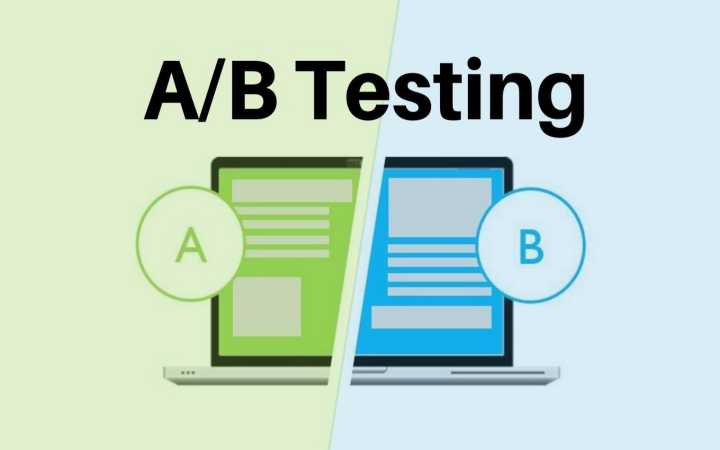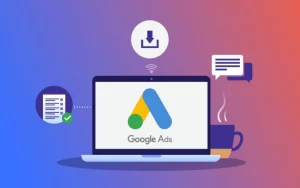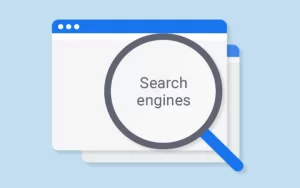The A/B testing technique is a way to find out which of the two options is better. This can be done in marketing campaigns or when changing a product so that it suits the users. Product managers who use A/B testing actively make decisions based on data that have been proven to work.

What is A/B Testing?
A/B testing compares two versions of something. You show part of your audience one version, another part sees the other. This allows you to determine which performs better. It’s about measuring which version generates more desired actions.
The process divides your audience randomly into groups. Each group views a unique variation of whatyou’re testing, like a webpage. By tracking conversions or other metrics for each version, data reveals the better performer.
But don’t stop at just A and B! Multivariate tests let you try multiple variations simultaneously. Finding the optimal combination improves results further.
Still, for beginners it’s smart to stick with simple A/B tests first. Isolating single changes makes understanding the outcomes easier. Master the basics before trying advanced techniques.
The Core Principles
Understanding A/B testing requires a thorough knowledge of its fundamental principles:
- Randomization: Users should be allocated randomly to variations to get rid of bias.
- Control of variables: Change only one thing at a time to know its effect on user behavior.
- Statistical significance: Tests should be run until there is enough data to determine whether chance alone can explain why a particular variant performs better than others.
- Clear hypothesis: The test must have an explicit goal and a specific change that needs to be examined.
Why Do You Need A/B Testing?
Walking into the maze of marketing without doing A/B tests is like putting on a blindfold. Here are the reasons why A/B testing should be part and parcel of your marketing plan.
- Enhance User Experience (UX): A/B Testing helps in making better the user experience; it’s important for conversions.
- Increasing Conversions: You can get more from your website traffic by changing things which can lead to higher conversion rates.
- Reduce the Risk: Not trying out changes made to website content before implementing them may bring about some challenges. The negative effects of such modifications can be minimized through A/B tests.
- Drive innovation: Being creative is the key during this test since you are supposed to come up with new ideas all the time hence gaining more experience.
How to Run a Basic A/B Test in 7 Steps
A/B testing may seem complex. Still, when you break it down into smaller actions, you can have an organized way of carrying out the tests. If for the first time, you are doing A/B tests or you want to enhance your current practices, these seven steps will guide you through.
Step 1: Set Clear Objectives
The first step is setting clear objectives for what you want your A/B test to achieve. Do you want more people signing up? Are sales of a certain product too low? Or do we need to reduce the bounce rate on our site?
Step 2: Choose The Thing To Be Tested
Determine which part of your campaign or design should be tested. This might be an image, a Call to Action button, or any action within the site such as clicking through different pages etc.
Step 3: Make Versions
Make a new version that is noticeably different from the original in one significant way. It could be anything – color scheme, font size, style choices (bold italics underlined), layout structure wording phrasing used for titles headings paragraphs lists bullets numbers etcetera… As long as you think it will affect user behavior!
Step 4: Decide on Testing Tools
To ensure that each variant is connected with a user who will be monitored for conversion, it is important to assign them appropriately. There are many tools used for A/B testing like Optimizely, VWO, etc.
Step 5: Decide How Big Your Sample Should Be
Before beginning your research, determine the number of people you will need. You must be able to notice significant differences between both potential changes. The test will not be accurate or conclusive if this is calculated incorrectly.
Step 6: Conduct the test
Randomize traffic so that an equal number of visitors is sent to each page – one being the original (A) and another a new version (B). Throughout testing, make sure external factors are controlled for in order not to have them affect outcome measures.
Step 7: Interpretation & Analysis
Once you have collected enough data from your test, use statistical methods to determine if there is a significant difference between the two variations. This will help you decide whether or not changes should be made based on insights gained through testing.
How to Find A/B Test Ideas?
You should have an idea before you start with A/B tests for the first time – sometimes they’re found in the most unexpected places.
Ask Your Audience
Social media is not just for broadcasting, but also for interacting. Use it to ask your audience what they like or do not like about the current setup.
Perform a Heuristic Analysis
Take a critical look at your advertising materials and see if they meet common usability standards.
Keep an Eye on the Competition
While you shouldn’t copy what your competitors are doing exactly, they can give some great ideas too! Learn from their successes and failures alike.
Use Analytics Tools
Hotjar, and Google Analytics tools can provide a lot of information about how people behave on your website this can tell you if things are working or not with its current setup by showing where visitors go most often or least often among other things.
Best A/B Testing Examples
If you look at real-world situations, you will find that A/B tests can provide a lot of insight into what works and what doesn’t work. Here are some examples of tests that have altered business operations forever.
Variations of CTA Buttons
Even the most insignificant changes like altering the color or text shape of a CTA button can affect its click-through rate. The most successful companies never stop testing their CTA buttons.
For example, a software company managed to increase its conversion rates by 21% when it changed the color of its call-to-action (CTA) from red to green while another online store saw an 11% improvement after placing a border around this button.
E-commerce Product Page
Every online store continuously tests different layouts for its product pages. This saw a 107% increase in the number of orders placed on retail sites after a products page changed its recommendations section.
Even the smallest things like altering the number of items shown in a category grid list view or moving description titles closer or further away from each other within certain limits may drastically change user interaction behavior patterns.
Email Marketing
When it comes to email marketing, there is no shortage of A/B testing opportunities from subject lines until an email gets sent out. One fund management company found out that their open rates could be improved by 30% simply by testing different subject lines for their emails.
Major Hurdles of Conducting A/B Test
Even though an A/B test is effective, there are still some troubles that marketers should watch out for when trying to make sure their tests are reliable and successful.
Sample Size and Duration
If the size of the sample group involved in your test is not large enough, or the time taken for the experiment is short then any information collected may turn out to be statistically insignificant. Long/extended tests have the potential to be influenced by changes in test group demographic characteristics during the study period which might lead to different outcomes.
Interference from Multiple Tests
When more than one trial is conducted on a singular page element at once it can distort data making it difficult for both experiments to show their worth. Such scenarios can be avoided through timing or applying multivariate testing tools.
Data Accuracy
It’s important to ensure that data is correct. A/B testing platforms are very complex but they are susceptible to human error as well. As such, you should check not only your methodology but also what kind of information you are gathering so that it accurately reflects user behavior.
Sequential Testing Bias
In addition, testing two sequential pages or elements within the same page would distort results as a result of a residual effect from the original experiment. To address this issue, it would be advisable to have some time interval between the tests.
Avoid These Mistakes While A/B Testing
Conducting inaccurate A/B tests leads to false results. These are some common mistakes you should avoid:
Ignoring Mobile Users
If you do not test mobile-friendly versions, you will miss out on reaching many of your customers since most internet traffic is through smartphones. Make sure that all A/B tests take into account both desktop and mobile experiences.
Stopping Tests Prematurely
Cutting tests short by stopping them early when one option appears to be winning may lead to an ineffective improvement. Allow enough time for your experiment to run its course and gather statistically significant data before deciding.
Failing to Justify Decisions with More Information
While A/B testing should inform your decisions, it should not be the sole basis for them. Use other qualitative and quantitative evidence that can be considered in the wider context of marketing strategy to back up any conclusions arrived at.
Complexity Overload
Although complex solutions offer deeper insights, oversimplifying the process may lead to longer test durations, confusion, and more mistakes. Try as much as possible to simplify your tests for accuracy and practicality sake.
FAQs
Is A/B Testing Ethical and Legal?
Yes, provided user privacy is respected and no harm is done. It is crucial to be transparent with your audience about any testing that you do to build trust.
Can A/B Tests Be Run With a Small Audience Size?
Although it is possible, caution should be exercised. Tests with tiny sample sizes tend to yield unreliable data which may be misinterpreted.
Does A/B Test Performance Improve Due To Visual Changes?
Sometimes making simple visual changes can significantly boost conversion rates; however, this is not always the case and thus continual testing is necessary.
Conclusion
An individual should perform trials on two versions of something among customers so that they can understand their behavior. After that, they should do these experiments regularly to collect necessary details that will help them when making decisions about advertising. You have to keep on trying until you become perfect in any activity. Let’s start optimizing all the campaigns using data!


